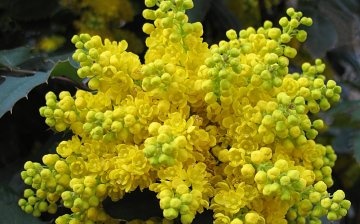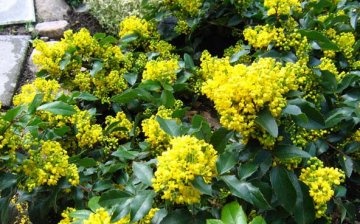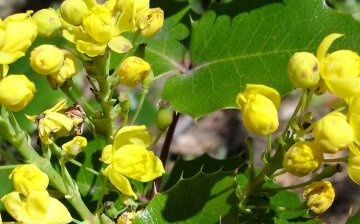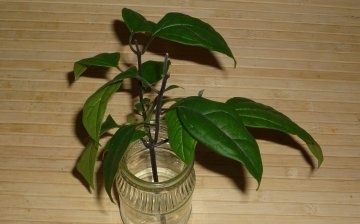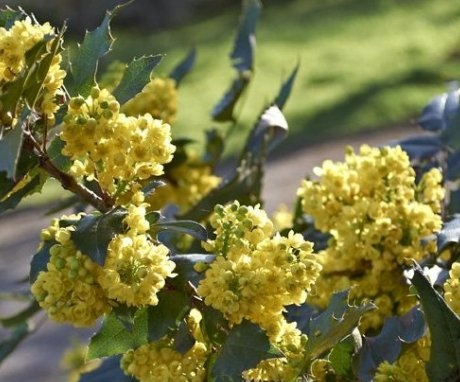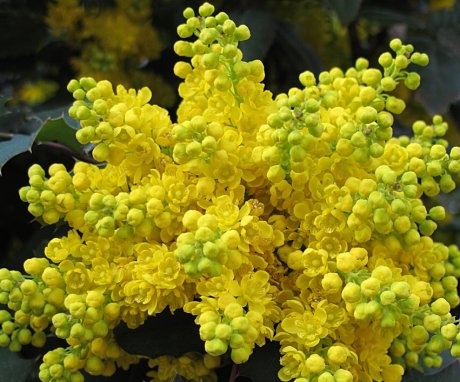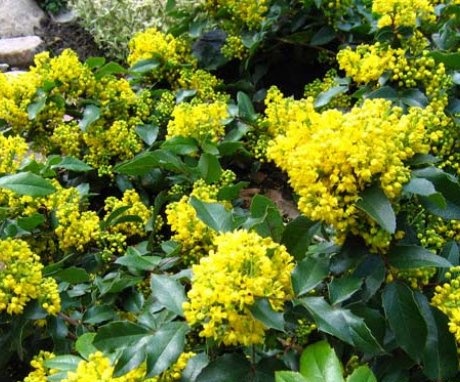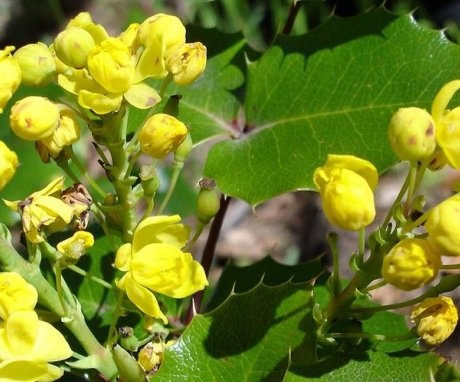Mahonia holly: growing technology
The beautiful name of holly mahonia means a short plant from the barberry family. This evergreen shrub has about fifty varieties. Mahonia holly can be grown in the temperate climate of the middle latitude of our country, although its home side is the continent of North America. There Mahonia holly is referred to as "Oregon grapes". Since the beginning of 1822, this plant was brought to the territory of Europe, where it grows to this day.
Content:
- What did the holly-leaved mahonia like to gardeners?
- Characteristics of Mahonia holly
- Planting Mahonia holly
- Plant care
- Reproduction of Mahonia holly
What did the holly-leaved mahonia like to gardeners?
For a start, many gardeners were captivated by the beauty of the rather large, leathery leaves that remain on the plant almost all year. Outwardly, these leaves resemble holly leaves, which is the reason for the specific name of Mahonia holly. When the leaves open in the spring, a reddish tint is noticeable on them, in the summer they turn dark green, and closer to autumn, a golden-bronze tint appears on them.
In addition, the red stems of Mahonia holly turn purple with the onset of cold weather.
It also mesmerizes gardeners and makes Mahonia an integral part of their decor. With the help of it, you can decorate not only rock garden stones, but also make up various group compositions, including on lawn areas. Magonia is planted next to various buildings, thus decorating their appearance. It also looks great against the backdrop of green gardens. Mahonia is characterized by slow growth in height., due to which it can serve as an excellent curb plant or as a low hedge.
Mahonia holly has a large number of outgoing root suckers, due to which it can grow rapidly and form small groups of thickets. This makes Mahonia an excellent groundcover.
Characteristics of Mahonia holly
Description of Mahonia holly:
- Mahonia holly has a pleasant and light aroma, a bit like lily of the valley flowers.
- Magonia enters the flowering phase mainly from May to June and blooms with small yellowish flowers, collected in small inflorescences - brushes. In a warm autumn, the plant can bloom in October.
- Mahonia is a cross-pollinated shrub that requires a paired specimen. Only in this case, the plant can have full-fledged fruits and seeds.
- Mahonia fruits are slightly oval in shape and reach a length of one centimeter. Usually, fruits ripen in the last month of summer, when they acquire a dark blue color.
- The fruit of Mahonia is called a berry that has a sweet and sour taste, similar to barberry and is used by many inhabitants of the planet for food. Inside the fruit there is a rather small amount of pulp and a large number of seeds.
If you keep Mahonia berries in the refrigerator for a while, their taste will become much more pleasant.Thanks to the dense stalk, the fruits stay on the Mahonia bushes for up to five months. Moreover, they do not decompose vitamins and other organic compounds. One bush of Mahonia gives up to two kilograms of berries.
Planting Mahonia holly
Mahonia holly is a forest plant, so it prefers shaded areas for growth. When planting plants in open areas, you can expose it to various burns, which will lead to weak growth and its oppression. It is best to plant this plant in calm areas located in partial shade from buildings or trees.
Mahonia is characterized by complete indifference to the composition of the soil and its fertility. Therefore, it can be planted in any soil.
If you want to get a fairly dense plantings of holly Mahonia, it should be planted at a distance of up to one meter from each other. If desired, to obtain sparse plantings, Mahonia is planted at a distance of two meters from each other.
Typically, the plant is placed to a depth of fifty centimeters in the ground and buried taking into account that the root collar of the plant is located at the soil level. After planting, the plant is well watered.
Plant care
Mahonia holly is completely unpretentious in care. In addition to the usual watering, from time to time the plant is fed with a solution containing complex mineral fertilizers.
Plant care secrets:
- It is advisable to make the first feeding in May, before the Mahonia enters the flowering phase.
- Fertilizer consumption is up to one hundred grams per square meter.
- Magonia needs abundant watering in a dry climate. To reduce evaporation of moisture from the soil mulching around the plant near the trunk circle.
- The plant can be easily transplanted, and this will not affect the season of the year and the age of the bush. You should not only be engaged in transplanting Mahonia in late autumn, as it may not accumulate strength to survive the coming winter cold.
- Due to the shade tolerance of Mahonia bushes, it can be grown in any shaded area of the garden.
- With the onset of cold weather, holly mahonia can be prevented from freezing in a winter with little snow. If the winters in your region are snowy enough, then Mahonia tolerates them well under a dense snow cover and does not need covering materials.
- Magonia is practically unaffected by penetration pathogens and fungi.
To give Mahonia a beautiful or sophisticated shape, the plant is pruned from time to time.
This is usually done in the spring. Only those shoot stems that do not have flower buds are pruned, so as not to disturb the abundant flowering of the bush.
The plant itself is quite calm about pruning and quickly recovers after it. By the way, the active restoration of the bush is due to the formation of young shoots.
Reproduction of Mahonia holly
Mahonia holly is propagated both by seeds and with the help of root suckers, cuttings and cuttings. Seed propagation is carried out in the spring, after small seedlings appear on them.
For propagation of Mahonia by cuttings:
-
Its green shoot stems, which have leaves, are used.
-
Cuttings are cut from these stems of small length, with the condition that their upper cut was straight, and the lower one was oblique.
-
To accelerate the growth of cuttings, the lower cut is pretreated with root growth stimulants.
-
The finished cuttings are placed in the soil, so that their lower bud is at ground level.
-
Then the soil layer is compacted and watered with a fungicidal solution on top so that the plant does not hurt.
-
The planted cuttings are covered with plastic bottles with walls transparent for the passage of light and watered abundantly.
Reproduction by layering is carried out in the spring:
- For this purpose, rather powerful shoots of Mahonia are bent close to the soil layer and covered with earth so that the shoot tip looks out of the soil.
- At the place of the bend to fix the shoot in the soil, a small constriction is made with the help of a wire, so that roots begin to form in this place.
- The tubercle of soil formed on the surface of the shoot is watered abundantly.
- In autumn, the cuttings with the resulting roots are separated and placed in a permanent place of growth.
More information can be found in the video.





